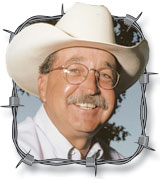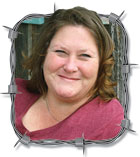Do you have a busy day planned, Mr. Crownover?” asked the lady at the desk, as I prepared to leave the doctor’s office.
“I don’t know, yet,” I replied.
The lady looked confused while I explained that I was a cattleman and calving season had started. “I never know how busy the day will be until the day and night are over.” It was obvious that she wasn’t a farmer, because she was still just as confused.
I had been the first patient that morning and I was hoping to be back at the farm to begin feeding and checking cows by 9:00 a.m. It had been one of those single-digit, frigid nights and I feared that there would be problems.
My first stop was at the pasture where I keep all the expectant, first-calf heifers. The first one had calved two days earlier and I suspected that several more would soon follow. As soon as I entered the gate, my suspicions were validated, when I saw a new mother licking her new baby. As I drove toward the pair for closer inspection, something caught my eye as I passed the pond. There, on the frozen pond, was the two-day old calf lying on the ice with all four legs spraddled out. He was alive, but he wouldn’t be for long at those temperatures. Knowing the depth of the pond, I carefully walked on it to drag the calf to shore. His little belly had melted through the ice and he was soaked and shivering. I put him in the cab of the truck and turned both the heat and fan to high. His distraught mother circled the truck for the entire 40 minutes it took for the calf to dry and cease his trembling. I then unloaded him from the truck and reunited him with his concerned momma. As I unrolled a bale of hay before leaving that farm, I saw another heifer that was off by herself. I made a mental note to return after feeding at the other pastures.
While feeding at the second farm, I noticed an older cow that had calved three days earlier staying by the corral, while all the other cows ran to my truck for fresh hay. After unrolling the bale, I drove to the older cow to see if there was a problem. There was. Her young calf had somehow been able to slide under the bottom rung of the corral and was now separated from the warmth and nourishment he needed from his now inaccessible mother. With all the latches on the corral frozen from a light freezing mist that morning, I had to climb over the ice-incrusted corral. Naturally, I slipped and fell, simultaneously bruising both my ego and my tailbone. Once I was able to get to my feet, I caught the calf and wrestled him back under the corral to a reunion with another appreciative mother.
The rest of the day was spent like most days this winter – unrolling hay and chopping ice and I eventually made it back to the farm with the heifers and found the one that had been acting funny. She had a new baby, but there was another heifer that was trying to claim the calf and was causing quite a stir. For a few minutes I couldn’t figure out why another heifer was trying to claim the calf until I saw her strain. She was in the early stages of labor and her hormones told her to “lick a calf.” I drove her to the barn and called my wife for backup.
By dark, Judy and I had helped the heifer successfully deliver her first baby and the young bovine was content to have her very own calf to lick. By the time I bedded down the cow and new calf, checked some more cows that were close to calving, and cleaned the calf-pulling equipment, supper was later than normal. And… the receptionist’s question from earlier in the morning had been answered.







